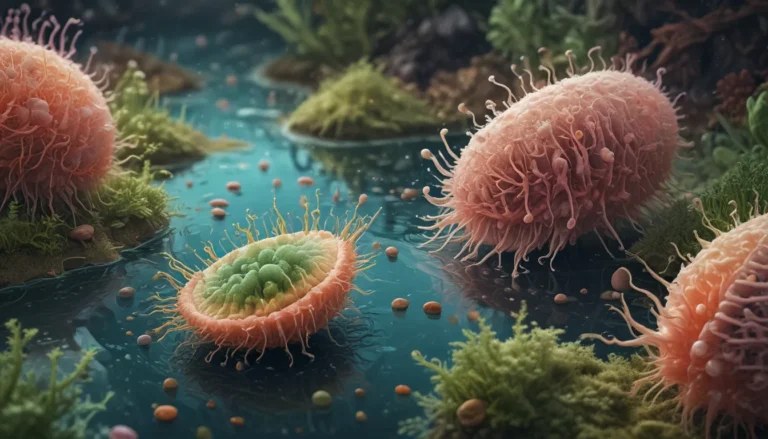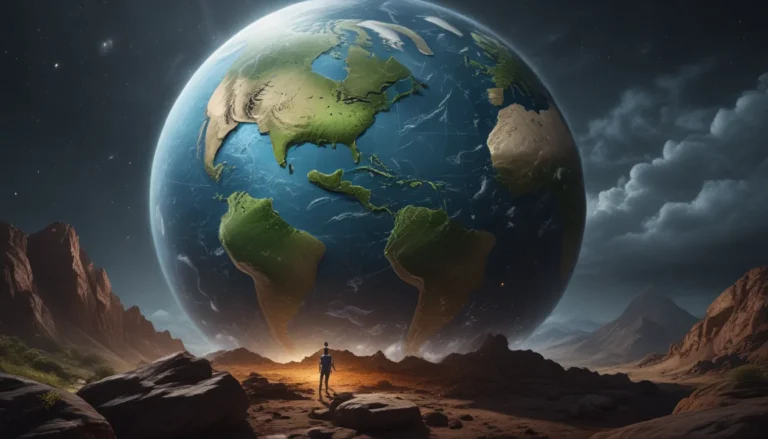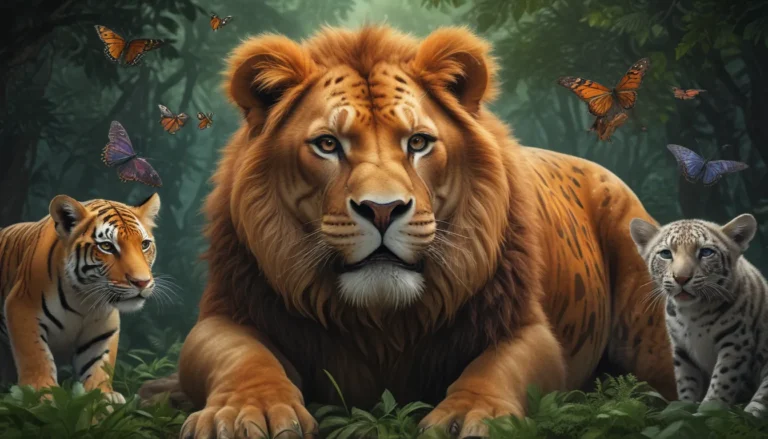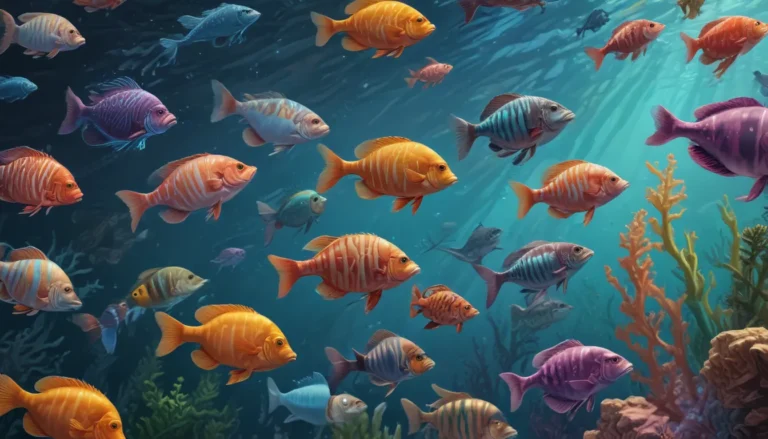A Note About Images: The images used in our articles are for illustration purposes only and may not exactly match the content. They are meant to engage readers, but the text should be relied upon for accurate information.
Ecological diversity, also known as biodiversity, serves as the foundation for the health and resilience of our planet’s ecosystems. It encompasses the incredible variety of species and the intricate interactions between them within a specific environment. From the deepest oceans to the highest mountain peaks, ecological diversity is a fundamental aspect of our world, shaping the interconnected web of life that sustains us all.
In this article, we will embark on a fascinating exploration of ecological diversity, uncovering 12 intriguing facts that shed light on its importance and showcase the extraordinary complexity of our natural world. From the astonishing number of species on Earth to the delicate relationships that exist between them, these facts will inspire a deeper appreciation for the beauty and significance of ecological diversity.
Key Takeaways:
- Ecological diversity, or biodiversity, is crucial for maintaining a healthy planet. The Amazon Rainforest and coral reefs are biodiversity hotspots, but they are threatened by factors like climate change and invasive species. – Protecting ecological diversity is essential for preserving the balance of life on Earth. Everyone, including you, can contribute to conservation efforts through small actions like recycling and supporting local initiatives.
The Amazon Rainforest: A Haven of Diversity
The Amazon Rainforest stands as a testament to ecological diversity, harboring an estimated 40,000 plant species, 1,300 bird species, and a myriad of other creatures. Often referred to as the “lungs of the Earth,” this majestic ecosystem plays a vital role in producing approximately 20% of the world’s oxygen.
Coral Reefs: Jewels of the Ocean
Coral reefs are not only visually stunning but also serve as biodiversity hotspots, hosting a diverse array of marine life. Despite covering less than 1% of the ocean floor, these vibrant ecosystems support roughly 25% of all marine species, showcasing the unparalleled richness of underwater biodiversity.
The Alarming Rate of Extinction
The extinction rate of species is alarmingly high due to factors such as habitat destruction, pollution, and climate change. Species are disappearing at a rate estimated to be 1,000 times higher than the natural extinction rate, posing a significant threat to ecological diversity and ecosystem resilience.
Tropical Rainforests: Oases of Life
Tropical rainforests, covering only 6% of the Earth’s surface, are incredibly biodiverse, housing a wealth of unique plant and animal species. These lush ecosystems are believed to provide a habitat for around 50% of all known species, highlighting their crucial role in preserving global biodiversity.
The Benefits of Biodiversity to Humans
Ecological diversity offers numerous benefits to humans, including access to food, medicine, and clean water. Many pharmaceutical drugs originate from natural sources, and indigenous communities possess valuable knowledge of plant-based remedies derived from diverse ecosystems.
The Threat of Invasive Species
Invasive species pose a significant threat to ecological diversity by disrupting natural ecosystems and outcompeting native species. When non-native species are introduced into new environments, they can upset the delicate balance of biodiversity, leading to the decline and potential extinction of indigenous species.
The Importance of Ecosystem Services
Ecosystem services, such as pollination, soil fertility, and climate regulation, are vital benefits that ecosystems provide to humans. Greater ecological diversity enhances the efficiency of these services, ensuring the sustainable function of ecosystems and safeguarding essential resources.
Climate Change’s Impact on Biodiversity
The effects of climate change, including rising temperatures and shifting weather patterns, have profound consequences for ecological diversity. Species may struggle to adapt to rapidly changing conditions, resulting in population declines and the risk of extinction, further underscoring the urgency of addressing climate change.
Ecosystem Stability and Resilience
Ecological diversity is essential for maintaining ecosystem stability and resilience in the face of disturbances. Diverse ecosystems distribute resources more efficiently, enhance productivity, and reduce the likelihood of ecological imbalances, promoting the long-term health and sustainability of natural environments.
The Ripple Effects of Species Loss
The loss of a single species can have cascading effects throughout an ecosystem, disrupting the intricate balance among different species and potentially leading to further extinctions. Protecting every species is crucial to preserving the overall ecological diversity and integrity of ecosystems.
Conservation Efforts: A Collective Responsibility
Preserving and protecting natural habitats, implementing sustainable practices, and raising awareness about the importance of ecological diversity are essential components of conservation efforts. By safeguarding biodiversity, we can ensure the continued health and well-being of our planet for future generations.
Everyone’s Role in Preserving Ecological Diversity
From simple actions like recycling and reducing single-use plastics to supporting local conservation initiatives, every individual can contribute to the preservation of ecological diversity. By coming together and taking proactive steps, we can make a meaningful impact in safeguarding the rich tapestry of life that surrounds us.
The 12 Enigmatic Facts About Ecological Diversity serve as a poignant reminder of the significance of our planet’s diverse array of life forms and the pressing need to protect and conserve them. By deepening our understanding and appreciation of the wonders of ecological diversity, we can actively participate in building a sustainable future for all living beings.
Conclusion
Ecological diversity encapsulates the remarkable variety of life forms and their intricate interactions within diverse ecosystems, showcasing the complexity and interconnectedness of life on Earth. By exploring the 12 enigmatic facts about ecological diversity, we have gained valuable insights into the extraordinary adaptations, species relationships, and ecological patterns that define our natural world. From the unparalleled biodiversity of tropical rainforests to the delicate balance of marine ecosystems, each fact underscores the imperative of preserving and conserving the rich ecological heritage of our planet.
Understanding and valuing ecological diversity is not only essential for scientific research but also for our own well-being and the sustainability of our planet. By recognizing the intricate beauty and complexity of nature, we can work towards protecting and maintaining the delicate balance of ecosystems for present and future generations.
FAQs
-
What is ecological diversity?
Ecological diversity refers to the variety of species, their interactions, and the different habitats and ecosystems they inhabit. It encompasses the complexity and interconnectedness of life on Earth. -
Why is ecological diversity important?
Ecological diversity is crucial for the proper functioning of ecosystems and their ability to provide us with vital services such as clean air, water, and food. It also contributes to the overall resilience and stability of our planet. -
How is ecological diversity measured?
Ecological diversity can be measured through various methods, including species richness (the number of species in a given area), species evenness (the relative abundance of each species), and measures of genetic diversity within populations. -
What are the main threats to ecological diversity?
Human activities such as deforestation, habitat destruction, pollution, climate change, and overexploitation of natural resources pose significant threats to ecological diversity. These factors can lead to the loss of species, disrupt ecosystems, and reduce overall biodiversity. -
How can we protect and conserve ecological diversity?
Protecting and conserving ecological diversity requires a combination of efforts, including the establishment of protected areas, sustainable resource management practices, conservation of key habitats, responsible consumption, and raising awareness about the importance of biodiversity. -
How does ecological diversity benefit humans?
Ecological diversity provides humans with crucial ecosystem services such as clean air, water purification, nutrient cycling, pollination, and climate regulation. It also contributes to the development of new medicines and technologies derived from natural products.
Embark on a journey of discovery in your local community, where wildlife and natural reserves offer a treasure trove of fascinating facts and insights. Explore the unique ecosystems and creatures that inhabit these spaces, and deepen your appreciation for the incredible biodiversity that surrounds us. Uncover the hidden gems waiting to be discovered right in your backyard!
Our commitment to delivering trustworthy and engaging content is unwavering, with each fact on our site contributed by real users like you. Our dedicated editors ensure the highest standards of accuracy and reliability, guaranteeing that the facts we share are not only captivating but also credible. Trust in our dedication to quality and authenticity as you immerse yourself in exploring and learning with us.






